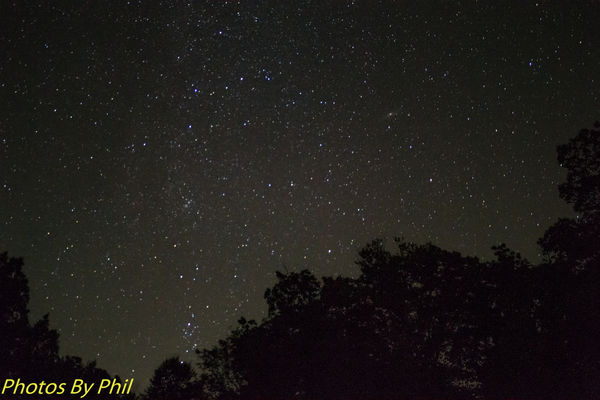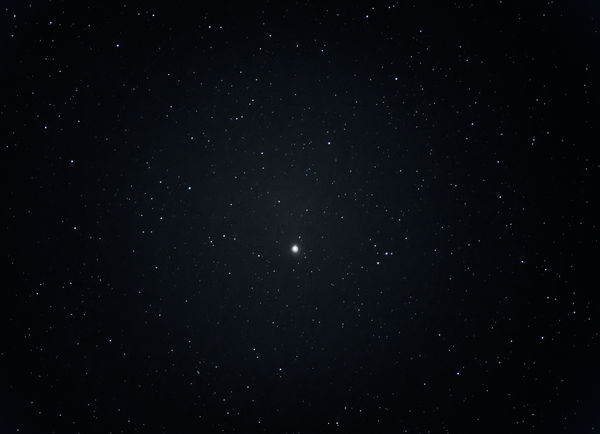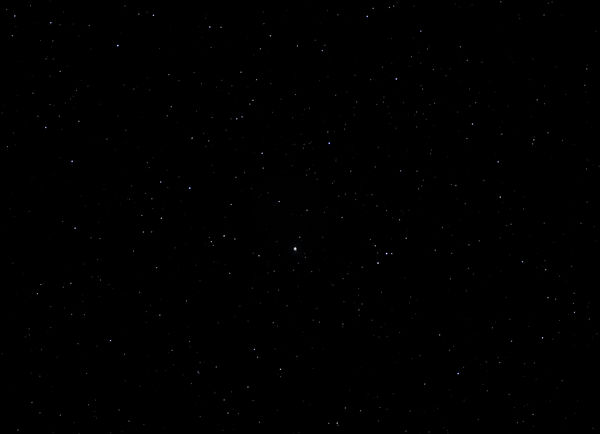Perseid and lens woes...
Aug 17, 2015 11:45:47 #
Ok, it has taken me a while to get to this, but here is the story of my perseid expedition...
Not wanting to be caught out with nothing at all, like last time, I took both cameras this time. My usual astro machine, the T4i (because it has the articulating screen) which was fitted with the EF-S 10-18mm lens, and my 7D, which had on the kit 18-55mm lens.
Both of them were focused in daylight, and wrapped with gaffer tape to keep them fixed.
I got up to my regular spot, and set up the T4i, took a test shot and zoomed in... It was *waaaaaay* off. I really didn't even need to zoom in to see that it was terribly out of focus. I had it on manual focus, and I tried shifting it just a little. This was when I discovered something odd. There is no infinity stop. The focus ring just goes round and round... I have never noticed that before, and it doesn't seem right. Is this something I should be contacting Canon about? For normal, non-astro stuff, it works fine on AF, but of course, at 10mm, pretty much is in focus regardless of what settings you use!
Anyway, I did have my back-up. I set that up and took a test shot, and it looked pretty good. Even zoomed in, it looked good and sharp. I spent an hour or so shooting in the same general area. I saw quite a few good meteors, but none of them were in the shot. There was a real good one which went right along the top of the tree line, but that was when I was trying to figure out the focus mess.
One reason I chose to shoot this particular field was that it contains my all-time favourite subject, M31. The books all go on about finding it by using the "great square of Pegasus"... I have never managed to identify *this* at all! Using Cassiopiea, it is *so* easy to find, though. Use the bigger of the 2 triangles as a pointer, and follow for about twice the 'height' of the triangle, and thar she blows!
You can imagine my disgust when I got home and uploaded everything, to find that the focus wasn't quite 'on' after all. They look ok, at 'normal' size. If you zoom in to 100%, however, everything is soft. Given the small size of M31 at 18mm, this is one which you really need to zoom in on, too. Bummer!
I am just about done with screwing around with this focus issue. I just can't mess around half the night (especially as I start back to proper work tomorrow...) and get nothing out of it. No matter what I do, it seems that I cannot get a good focus. Now, this is where I need some advice from the experts... Am I right in assuming that a *prime* lens will be focused on infinity if I just turn it to the stop? Is it the zoom factor which causes all the messing around, allowing the lens to focus *past* infinity?
I have a 28mm Vivitar f2.5 prime which I got from eBay. I haven't used it much because the field of view is so much narrower than the 10mm, or even the 18mm. For M31, I would *like* to try something bigger. All my long lenses are also zooms, however. If my assumption re the easier focus of a prime is correct, then I may go roaming the halls of eBay for a couple of other prime focal lengths, just to let me get *something* out of the heavens above!
There is always my trusty SX50, which does a marvelous job on the moon, but I suspect that focusing on M31 would cause me more heartaches with that setup...
*sigh*
EDIT: actually, the download looks half-way decent on here. It looks much worse in LR when taken to 1:1 view...
Not wanting to be caught out with nothing at all, like last time, I took both cameras this time. My usual astro machine, the T4i (because it has the articulating screen) which was fitted with the EF-S 10-18mm lens, and my 7D, which had on the kit 18-55mm lens.
Both of them were focused in daylight, and wrapped with gaffer tape to keep them fixed.
I got up to my regular spot, and set up the T4i, took a test shot and zoomed in... It was *waaaaaay* off. I really didn't even need to zoom in to see that it was terribly out of focus. I had it on manual focus, and I tried shifting it just a little. This was when I discovered something odd. There is no infinity stop. The focus ring just goes round and round... I have never noticed that before, and it doesn't seem right. Is this something I should be contacting Canon about? For normal, non-astro stuff, it works fine on AF, but of course, at 10mm, pretty much is in focus regardless of what settings you use!
Anyway, I did have my back-up. I set that up and took a test shot, and it looked pretty good. Even zoomed in, it looked good and sharp. I spent an hour or so shooting in the same general area. I saw quite a few good meteors, but none of them were in the shot. There was a real good one which went right along the top of the tree line, but that was when I was trying to figure out the focus mess.
One reason I chose to shoot this particular field was that it contains my all-time favourite subject, M31. The books all go on about finding it by using the "great square of Pegasus"... I have never managed to identify *this* at all! Using Cassiopiea, it is *so* easy to find, though. Use the bigger of the 2 triangles as a pointer, and follow for about twice the 'height' of the triangle, and thar she blows!
You can imagine my disgust when I got home and uploaded everything, to find that the focus wasn't quite 'on' after all. They look ok, at 'normal' size. If you zoom in to 100%, however, everything is soft. Given the small size of M31 at 18mm, this is one which you really need to zoom in on, too. Bummer!
I am just about done with screwing around with this focus issue. I just can't mess around half the night (especially as I start back to proper work tomorrow...) and get nothing out of it. No matter what I do, it seems that I cannot get a good focus. Now, this is where I need some advice from the experts... Am I right in assuming that a *prime* lens will be focused on infinity if I just turn it to the stop? Is it the zoom factor which causes all the messing around, allowing the lens to focus *past* infinity?
I have a 28mm Vivitar f2.5 prime which I got from eBay. I haven't used it much because the field of view is so much narrower than the 10mm, or even the 18mm. For M31, I would *like* to try something bigger. All my long lenses are also zooms, however. If my assumption re the easier focus of a prime is correct, then I may go roaming the halls of eBay for a couple of other prime focal lengths, just to let me get *something* out of the heavens above!
There is always my trusty SX50, which does a marvelous job on the moon, but I suspect that focusing on M31 would cause me more heartaches with that setup...
*sigh*
EDIT: actually, the download looks half-way decent on here. It looks much worse in LR when taken to 1:1 view...
Aug 17, 2015 13:43:35 #
You can't assume that a lens will be in perfect infinity focus at the stop. And I actually prefer that it is not. Focusing on stars is not that easy of a task, especially when you can't see the star to focus on it. I suspect that the tape is not quite good enough to maintain that infinity focus and I find just touching the lens can cause it to shift a tiny bit.
I do have an advantage using the Sony with the EVF in that I can see a number of stars and I can pick which one to focus on. And I carefully adjust for absolute minimum star size, and I do find this to be just before the stop. I took quite a few last night with my 300mm lens and every one ended up in perfect focus.
But you need to keep thinking of a way to get that camera into perfect focus and one of these times, it will come together.
I do have an advantage using the Sony with the EVF in that I can see a number of stars and I can pick which one to focus on. And I carefully adjust for absolute minimum star size, and I do find this to be just before the stop. I took quite a few last night with my 300mm lens and every one ended up in perfect focus.
But you need to keep thinking of a way to get that camera into perfect focus and one of these times, it will come together.
Aug 17, 2015 14:36:21 #
Aug 17, 2015 19:29:55 #
CraigFair wrote:
Yeah, not so much. For some reason, the UHH download does look pretty good. In LR, if I look at the images 1:1, the stars are definitely 'soft'.Nice job Phil, beautiful pin-points on your stars.
This whole focus thing has me somewhat demoralized, to be honest. Finding a night where the weather cooperates, I don't have to be up early for work in the morning, going out late (well past my bedtime!) and driving up to my site, just to come away with nothing usable is enough to kill anyone's enthusiasm.
My charter tomorrow has been cancelled, and that is the last day before school starts. If the sky stays clear tonight, I might have one more try using the prime lens, and see what that can do.
Aug 17, 2015 22:56:03 #
It looks pretty doggone sharp to me, Phil.
It's not easy, and it takes a lot of trial and error sometimes.
But I think you are doing quite well.
Something else I do is to remain as still as I can while the shutter is open.
I'm usually sitting, so I don't shift, nor move my feet, so as to not introduce any vibrations into the ground. Even when my equipment is on a slab or hard scape. Which can even be worse for vibration.
Keep at it as you can get to it.
It's not easy, and it takes a lot of trial and error sometimes.
But I think you are doing quite well.
Something else I do is to remain as still as I can while the shutter is open.
I'm usually sitting, so I don't shift, nor move my feet, so as to not introduce any vibrations into the ground. Even when my equipment is on a slab or hard scape. Which can even be worse for vibration.
Keep at it as you can get to it.
Aug 17, 2015 23:27:31 #
Bloke wrote:
If you are into Photoshop cheating, there is a way to shrink those stars. There is about a $50 SW solution to shrink stars. I have downloaded the 30 day trial and am playing with it right now. Yeah, not so much. For some reason, the UHH download does look pretty good. In LR, if I look at the images 1:1, the stars are definitely 'soft'.
I suggest watching this tutorial before attempting to use: http://www.rc-astro.com/resources/StarShrink/tutorial.html
I am supplying two images. One is a before. I have one bright star, Kochab, which is in the dipper part of the Little Dipper. Note how bloated and blown out it is. The second image is the after where I used StarShrink and adjusted the settings so only this one big, fat star is shrunk.
It can shrink all the stars at once if you adjust the settings to do so.
Aug 17, 2015 23:45:45 #
OH!
Now that is just plain cheating, Jim! :-o
:lol: :lol: :lol:
I can make stars shrink...
If I zoom out, away they go... :shock:
:lol: :lol: :lol: ;)
Now that is just plain cheating, Jim! :-o
:lol: :lol: :lol:
I can make stars shrink...
If I zoom out, away they go... :shock:
:lol: :lol: :lol: ;)
Aug 17, 2015 23:47:38 #
JimH123 wrote:
That looks interesting. I might have a look at that tomorrow. It clouded over again tonight, so no chances there. According to the forecast, it is going to be hazy and muggy for the rest of the week, so no change there!If you are into Photoshop cheating, there is a way to shrink those stars. There is about a $50 SW solution to shrink stars. I have downloaded the 30 day trial and am playing with it right now. Suggest watching this tutorial before attempting to use: http://www.rc-astro.com/resources/StarShrink/tutorial.html
Aug 17, 2015 23:51:56 #
Bloke wrote:
Why don't you post something after trying. I tried to experiment with with one of your images, but I must have been locked out somehow. I didn't attempt to find out why. I do find that if I load in a JPG into PS, it doesn't work. And I found it didn't work if I loaded a RAW into PS. But if I loaded a TIFF, it worked.That looks interesting... I might have a look at that tomorrow. It clouded over again tonight, so no chances there. According to the forecast, it is going to be hazy and muggy for the rest of the week, so no change there!
Aug 18, 2015 08:42:41 #
dlmorris
Loc: Loma Linda, Ca
Focusing is always a problem! Can you zoom in on the image on your screen after taking a picture? If so, take a test shot, zoom in on it, and if it is soft, make a focus change and try again.... Try aiming at a bright star or planet or distant light.... I under your frustration! Keep trying! Experiment at home so when you go out to darker skies, you've already worked out some of the problems.
Aug 18, 2015 09:44:54 #
dlmorris wrote:
Focusing is always a problem! Can you zoom in on the image on your screen after taking a picture? If so, take a test shot, zoom in on it, and if it is soft, make a focus change and try again.... Try aiming at a bright star or planet or distant light.... I under your frustration! Keep trying! Experiment at home so when you go out to darker skies, you've already worked out some of the problems.
I tried that. My first test shot was so far off that I didn't even need to zoom in... That was when I discovered that my lens doesn't seem to have a 'stop'. The focus ring just keeps going around, and without something to see through the lens, I couldn't even tell whether I was focusing in or out!
For terrestrial stuff, a 10-18mm is pretty much in focus for anything. It works fine in A/F, but I don't think I had ever noticed it behaving like this before. In theory, I want to focus to the stop, then back off a bit and adjust as necessary. Without a stop, I was just fishing in the dark...
Aug 18, 2015 10:13:06 #
dlmorris
Loc: Loma Linda, Ca
I have a friend with a lens like that. Very strange design!! I haven't had a chance to play with it myself, though.... One thing you might be able to do is to buy an older non-auto-focus prime lens and an adapter for your camera, specifically for astrophotography.
Aug 18, 2015 14:46:06 #
Bloke wrote:
Ok, it has taken me a while to get to this, but he... (show quote)
The STM lenses don't have ANY mechanical connection between the focusing ring and the mechanism that actually focuses the lens. The ring simply operates some kind of switches (or maybe a shaft encoder) which tell the STM drive what to do. This also means that the lens cannot be manually focused with the body/lens powered down.
Also, you can't count on the infinity focus being precisely at the end stop, especially when you go into longer focal lengths. The designers have to leave some leeway to allow for the effects of thermal expansion, as the temperature changes on the focus position. This is generally a tiny effect and lost in the depth-of-field at short focal lengths, but can be a major issue with long telephotos.
Aug 18, 2015 22:08:33 #
rocketride wrote:
The STM lenses don't have ANY mechanical connectio... (show quote)
I was not aware that this was an STM lens... It's the EF-S 10-18mm. It could be, but I was caught out by the lack of a stop. I haven't had the lens long, and this was probably my first attempt at manual focus.
I know the focus point is not at the stop, especially in the more complex lens designs. It does give a starting point, though. My theory is to go to the stop, then start inching back, a tiny bit at a time. Without a stop, though, it isn't possible to tell where the lens *thinks* it is focused. The only target I had to play with was a white post at the other end of the parking lot. I could light that with my flashlight, and autofocus on it. It was no where near far enough away, though.
Part of the issue is the nature of a very wide-angle lens. For terrestrial purposes, you are either focused close or far. If you do not focus on something within 20 feet or so, then the whole image is pretty much in focus at 10mm. Ok, 16mm with the crop factor stuff. With the stars, you have to be much more critical, but I have not figured out a way of doing that which works for me.
My last SLR camera, back in the 80s, I had a 35mm lens. That was considered a wide angle. If you had a 28mm, that was a super-wide angle. I never heard of anything wider than that back then... I am sure that they were out there, but they were not something that most people ever came across. We are terribly spoilt these days, by the capability of the equipment that almost any of us can afford!
Aug 18, 2015 22:58:22 #
Spoilt?
I'm not spoilt.
I usually smell like this. :roll: :lol: :lol: :lol: :mrgreen:
I'm not spoilt.
I usually smell like this. :roll: :lol: :lol: :lol: :mrgreen:
If you want to reply, then register here. Registration is free and your account is created instantly, so you can post right away.






